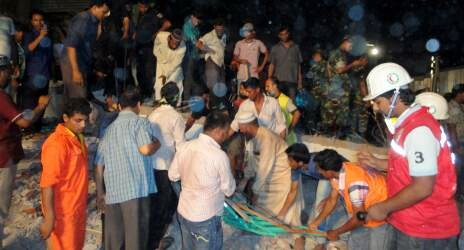
The collapse of the eight-storey complex killed over 1,100 people and injured 2,500 more. Both the building owner and the engineer were made aware of substantial cracks in the building many hours before it collapsed, but no evacuation was undertaken. It later emerged that the multi-storey building itself had been constructed a number of storeys higher than approved, and was also not engineered for the industrial machinery and numbers of people working there. Although charges were brought against several people based on negligence, this tragedy highlights wider legal issues, such as a lack of building codes and failures in the enforcement of existing codes. This case – along with other structural failures occurring this year in Egypt, Cambodia, Rwanda and most recently in Philadelphia – emphasises the importance of having strong regulatory frameworks in place.
The Bangladesh building disaster illustrates the importance of having effective legal frameworks for building and construction to prevent such man-made disasters. Without even these basic safety standards in place, buildings will also not withstand natural disasters such as floods, tropical storms or earthquakes. Building collapse often increases dramatically the number of people killed and injured in such natural disasters.
The IFRC’s Disaster Law Programme together with the UN Development Programme (UNDP) is currently undertaking a global research project, focusing on the difference law can make in reducing risks from natural hazards. The study aims to identify and evaluate best practice, common gaps and the effectiveness of existing legislation related to disaster risk reduction. It draws on desk studies of the legal frameworks in 26 countries, and will use more in-depth analyses of national laws and their implementation, particularly at local and community levels, in 13-15 countries. Recently completed case studies by the project partners include Ethiopia, Guatemala, Kyrgyzstan, Madagascar, Iraq, New Zealand, Nicaragua and Vietnam.
The research is showing that in countries which experience rapid and uncontrolled urbanisation, violation of building codes is rife. Common practices include failure to obtain necessary approvals, the use of poor quality materials, faulty design, and lack of fire and sanitation features. Preliminary findings from the research suggest that even in countries where building codes exist they are often not comprehensive enough, they are not legally enforceable, or they are not implemented effectively. This can be due to various factors, including insufficient capacity at local government level to ensure compliance, the increased cost to owners in meeting minimum requirements, and a low level of acceptance and awareness amongst the population.
Effective safety laws require clearly defined lines of responsibility and accountability at all government and community levels, and the resources and capacity to ensure their implementation. This can prevent builders and engineers from cutting corners in sourcing materials or in construction methods, and ensure that authorities perform building inspections and enforce safety regulations as stipulated in the law. It is also imperative for local communities to be educated so that they are aware of the relevance of building codes in reducing their own risk, especially when they construct their own homes from local materials. Sturdier homes and structures are better equipped to withstand flood surges and strong winds, and are also more resistant to fires, tremors and other hazards.